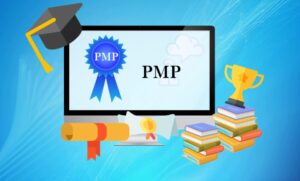
Cropped image of beautiful female medical doctor listening to handsome patient with broken leg and making notes while working in her office
Suffering an intense bone fracture can be bodily and emotionally challenging to revel in. The course to recovery may be long and traumatic, requiring a multidisciplinary method to make sure of the first-rate viable consequences. Osteopaths play a vital position in this system, using their information in musculoskeletal health to facilitate recovery, repair mobility, and alleviate aches. This article delves into the methods wherein osteopaths can drastically make a contribution to rehabilitation after an intense bone fracture.
Understanding the Impact of Severe Bone Fractures
Severe bone fractures, whether they involve a couple of breaks, displaced fragments, or joint involvement, necessitate comprehensive remedy and rehabilitation. These fractures frequently result from high-impact incidents, together with automobile accidents, falls from heights, or sports-related accidents. They might also require surgical intervention, inclusive of open discount and inner fixation, to realign and stabilize the fractured bones.
Once the initial remedy is completed, the rehabilitation segment starts, specializing in restoring function, mobility, and power. To get a remedial massage, you should hire a professional osteopath in your region. For example, West Osteopathy, Melbourne Osteopathy experts offer the best remedial massage.
The Role of Osteopaths in Post-Fracture Rehabilitation
Assessment and Diagnosis
Osteopaths start the rehabilitation method by accomplishing a thorough assessment of the affected person’s musculoskeletal device. This includes comparing the affected place, surrounding joints, and adjacent soft tissues. Through manual palpation, range of motion checks, and in all likelihood imaging research, osteopaths can and should diagnose any residual issues, such as joint stiffness, muscle imbalances, or confined mobility.
Manual Therapy for Pain Management
Severe bone fractures regularly result in significant pain, each on the site of the fracture and in surrounding tissues. Osteopaths utilize numerous guide techniques, together with gentle tissue manipulation, myofascial release, and joint mobilization, to relieve aches and pain. By addressing muscular anxiety and cause factors, they help restore everyday muscle features and reduce pain associated with the recuperation manner.
Restoration of Range of Motion
Immobile joints and a confined variety of movement are not unusual challenges following excessive bone fractures. Osteopaths employ specific physical games and hands-on strategies to softly mobilize joints and improve flexibility.
This aids in breaking down scar tissue, stopping joint stiffness, and facilitating a gradual return to regular movement styles. They offer remedial massage to improve blood circulation and help in healing. Westosteaopthy experts offer the best Remedial massage Truginina.
Correction of Muscular Imbalances
Prolonged immobilization and adjusted motion styles after a severe bone fracture can result in muscle imbalances. Weaker muscles might also come to be inhibited; even as compensatory mechanisms may lead to the overuse of different muscle groups. Osteopaths appoint focused sporting events and stretch to repair muscular balance, making sure that the workload is sent lightly throughout muscle groups.
Facilitation of Tissue Healing
Osteopaths are skilled in understanding the body’s innate potential for self-healing. Through gentle strategies, they aim to beautify the frame’s natural ability to restore and regenerate broken tissues. This may additionally involve techniques like lymphatic drainage, which facilitates the reduction of swelling and promotes a more efficient restoration response.
Postural Realignment
Severe bone fractures, in particular those involving weight-bearing joints, can cause alterations in posture and gait. Osteopaths examine posture and correct any imbalances or misalignments that could have evolved throughout the recuperation method. By restoring proper alignment, they help prevent lengthy-term problems and reduce the hazard of destiny injuries.
Integration of Mind-Body Connection
Osteopaths understand the interplay between physical and emotional well-being. They paint holistically, considering the effect of the injury on the patient’s typical health. Techniques like mindfulness, respiration, physical activities, and rest techniques can be included to address strain, anxiety, or emotional trauma associated with the fracture.
Patient Education and Empowerment
Osteopaths play a vital function in teaching sufferers approximately their situation and empowering them to take an active position in their healing. This may additionally encompass supplying guidance on at-home physical activities, self-care techniques, and lifestyle modifications that guide the recovery manner.
Functional Rehabilitation Planning
Osteopaths expand custom-designed rehabilitation plans tailored to the unique desires and goals of each patient. These plan consciousness of purposeful sports which can be applicable to the individual’s everyday lifestyles and sports.
By incorporating sporting events that mimic actual-world actions, osteopaths make certain that sufferers regain the potential to carry out duties crucial to their independence and proper well-being.
Monitoring Progress and Adjusting Treatment
Throughout the rehabilitation manner, osteopaths intently display the affected person’s progress. They frequently reconsider the range of motion, strength, and useful skills. Based on those opinions, osteopaths make vital modifications to the treatment plan. This dynamic method ensures that the rehabilitation method stays focused, effective, and aligned with the affected person’s evolving desires.
Conclusion: A Collaborative Approach to Recovery
Rehabilitation after an excessive bone fracture requires a collaborative attempt between healthcare experts, and osteopaths play a critical position in this multidisciplinary approach. Their know-how in musculoskeletal fitness, mixed with holistic information of the body’s innate recovery mechanisms, allows them to deal with the unique demanding situations posed by using intense fractures.
Through manual therapy, focused sports, and affected person training, osteopaths empower people on their journey to restoration, in the end restoring function, mobility, and first-class lifestyles.






